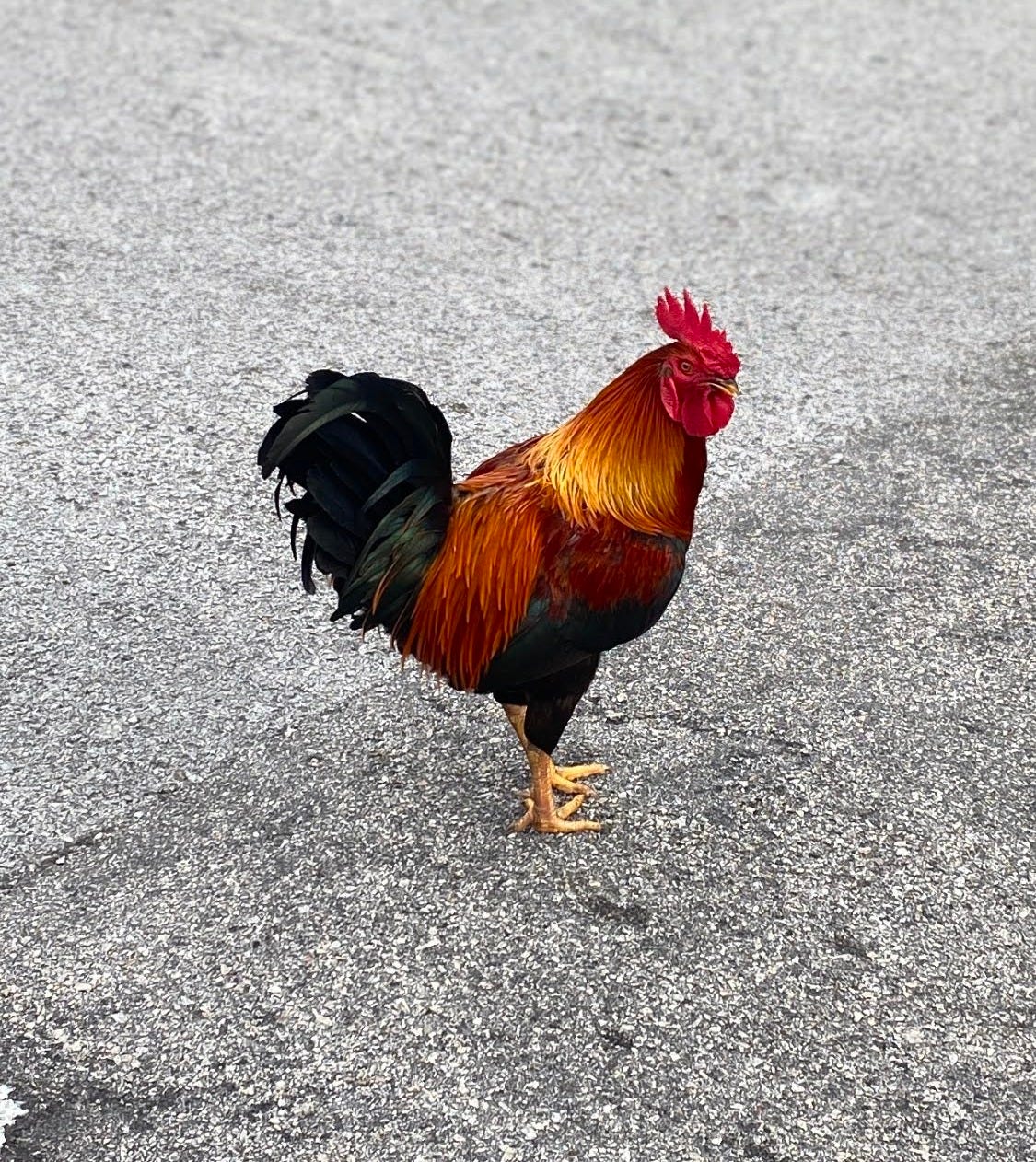Roosters and Their Tiny Earplugs
Was that a rooster's crow or just my alarm going off?
Howdy! It’s Joey, back with more Fun Fact Friyay. This fact is sure to wake you up.

Roosters have internal earplugs to avoid going deaf from their own loud crowing.
Every once in a while, I have come across a rooster in the wild. It is always a delightful time.
Most recently, I crossed paths with a feathered friend in Malaysia. It was just casually walking along the street and was kind enough to pose for a few photos. Maybe it hadn’t been jaded by paparazzi yet.
What that rooster did not do, however, was crow. And perhaps that was a good thing, because rooster crows are LOUD.
Of course, they have to be, since they serve as alerts to others in the area. Rooster crows are often associated with alarms; while it’s true that roosters often crow in response to changing daylight, they also do it to say “this is my territory,” to woo potential mates, or to tell their friends about a tasty treat they just found.
In short, there are many reasons why a rooster might crow. Apparently, “Did you get my good side?” is not one of them.
A rooster’s crow averages over 100 decibels, or the same volume as a chainsaw. How fitting, since it’s nearly Halloween.
(By the way, if any screenwriters are reading this, a horror film where the villain uses a rooster as a chainsaw would be phenomenal. I don’t see a world in which it doesn’t make millions of dollars.)
If you frequently use chainsaws or stand near roosters without ear protection, you will lose your hearing. The inner ear has tiny hair cells, and they get damaged from repeated loud noises.
Roosters have these minuscule hair cells, too. However, researchers from the University of Antwerp and the University of Ghent, Belgium, learned that roosters have a secret protective weapon: internal earplugs.
The researchers published a paper in Zoology, a journal studying all kinds of fascinating animal actions. They used tiny microphones and micro-computerized tomography scans on the rooster’s skulls to investigate.
It turns out roosters have soft tissues that dampen incoming noise. Typically, these cover about half of their eardrums. But when the rooster leans its head back to crow, a new piece of material folds across the ear canal, nearly covering it entirely to block out loud sounds. Roosters (and birds in general, including chickens) can also regrow damaged hair cells.
So, by tilting its head back, a rooster avoids losing its hearing when it bellows out a loud crow to the entire neighborhood.
If only we could block out sound when we lean our heads back and sigh at the blissfully oblivious person loudly talking on their phone or playing music without headphones. Maybe someday…


